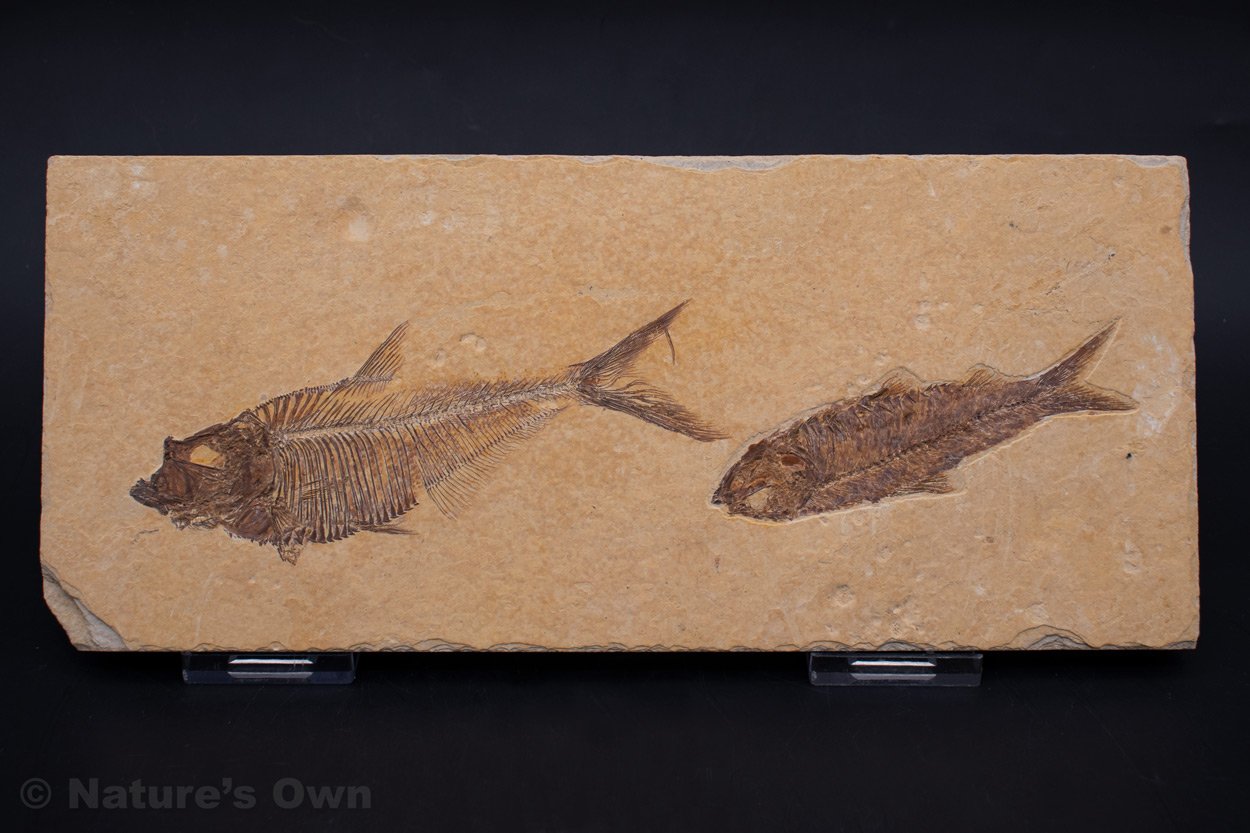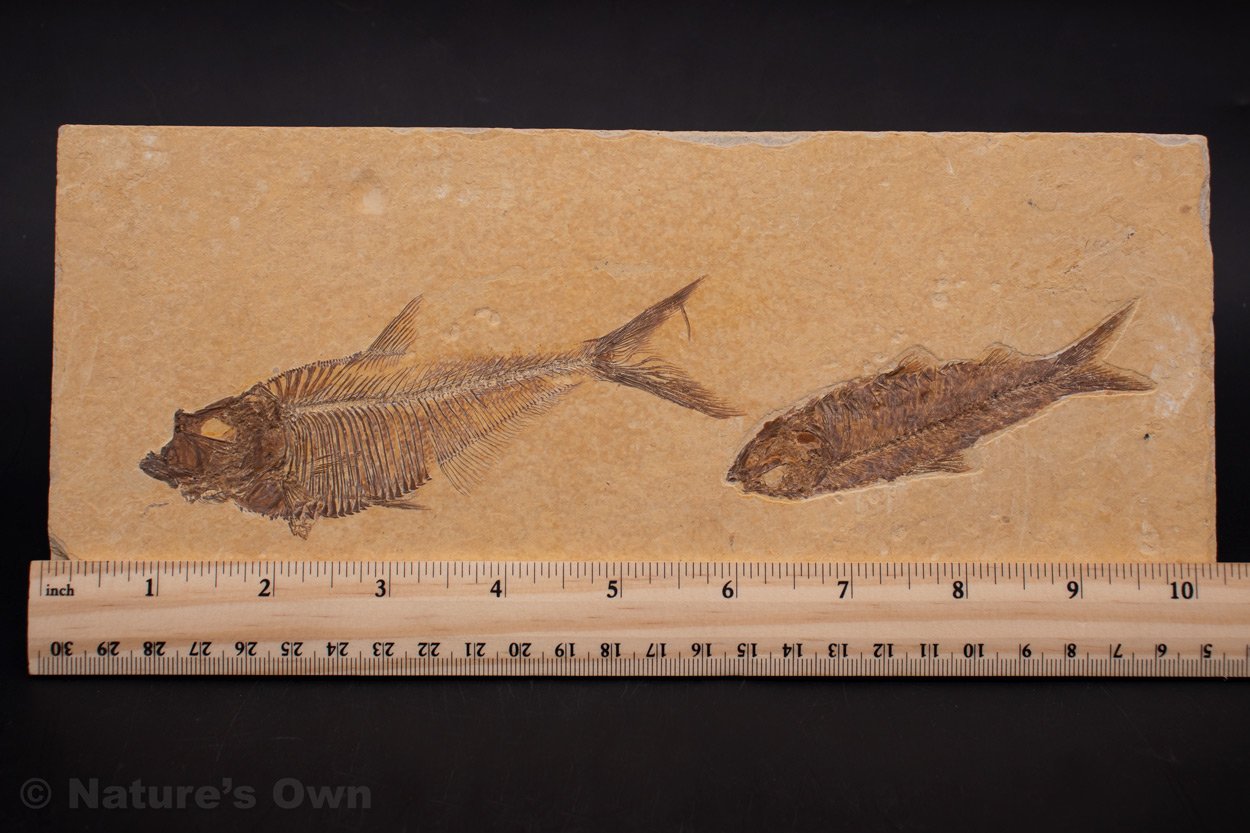Fossilized Fish Plate #1




Fossilized Fish Plate #1
This fossilized fish specimen represents two prominent species from the Eocene Epoch: Diplomystus analis and Knightia. These fish were found within the abundant fossil beds of what was once Lake Uinta, now recognized as part of the Green River Shale formation in Western Wyoming. Approximately 50 million years ago, significant volcanic or climatic events are believed to have altered the lake's ecology, resulting in mass fish mortality. This occurrence has provided paleontologists with an invaluable glimpse into the diverse aquatic life that thrived in the lake before the ecological disruption. The well-preserved fossils serve as key evidence of the evolutionary history and environmental changes that took place during this time period.
Approx 10.25” x 4.5” x 0.5”
